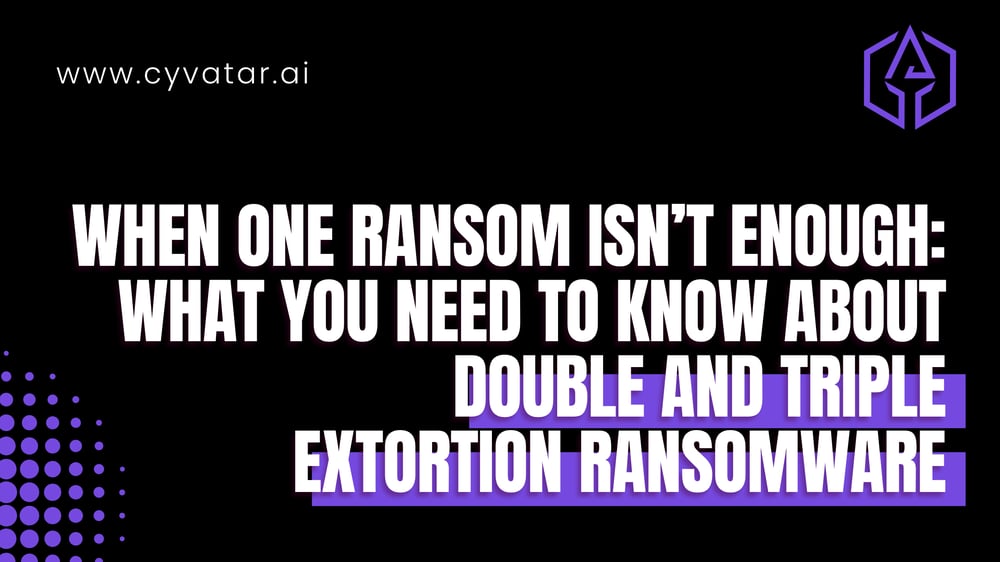What You Need to Know About Double and Triple Extortion Ransomware
cybersecurity ransomware double extortion triple extortion Jun 24, 2025 3:30:34 PM Court Pereira 3 min read

Imagine waking up to find your business’s systems completely locked down. You can’t access customer data, financial records, or even email. A message on your screen demands a hefty payment to get your files back. That alone is terrifying—but these days, it's just the beginning.
Welcome to the age of double and triple extortion ransomware attacks—where hackers don’t just hold your data hostage… they leverage it in ways that keep business leaders up at night.
What Is Double and Triple Extortion?
Traditional ransomware is scary enough: cybercriminals encrypt your files and demand payment for the decryption key.
Double extortion raises the stakes: attackers exfiltrate (steal) your data before encrypting it. Even if you have good backups and refuse to pay, they threaten to publish or sell your sensitive information online—putting your customers, partners, and your reputation at risk.
Triple extortion takes it a step further. Not only do they:
- Lock your files,
- Steal your data, and
- Threaten to leak it…
They now contact your customers, vendors, or employees directly, pressuring them to convince you to pay up—or face the consequences.
That’s not a cyberattack. That’s a full-blown crisis.
Real-World Scenarios That Hit Close to Home
This isn’t just happening to big banks and Fortune 500s. Small businesses, law firms, clinics, manufacturers, and nonprofits are getting hit every day. Why?
Because they often:
- Don’t have dedicated security teams,
- Use outdated or unmonitored tools,
- And wrongly assume “we’re too small to be a target.”
We’ve heard from businesses that had to shut down operations for days. Others faced regulatory penalties because customer data was leaked. One organization told us their clients were emailed by the attackers threatening exposure unless action was taken.
That’s the kind of reputational damage you can’t undo with a quick rebrand.
Why This Is Happening More Often
Cybercriminals have evolved. Ransomware is no longer a blunt-force tool—it’s a calculated business model. Sophisticated groups now operate like startups, complete with help desks, affiliates, and profit-sharing.
Data is their product. Fear is their marketing strategy. And they don’t need to hack a firewall to get in anymore—all it takes is one employee clicking a malicious link or reusing a password.
How to Protect Yourself
If you're thinking, “I’ll deal with this if it happens,” you’re playing a dangerous game.
Here’s what every business—big or small—should be doing now:
- Implement strong email security (phishing is still the #1 way in)
- Use DNS protection to block access to malicious sites before they load
- Train employees—not once a year, but ongoing, bite-sized lessons
- Back up data regularly and test your recovery process
- Work with security experts who proactively monitor and remediate threats
And if you already have an MSP or IT provider? Great. But remember: cybersecurity isn't just IT's problem anymore. You can (and should) partner with a team that works alongside them to close the gaps.
You Don't Need to Do This Alone
At Cyvatar, we make cybersecurity easy, proactive, and human. We meet you where you are—whether you’ve got no protection or just need to plug the last few holes.
We’ve helped businesses bounce back from ransomware scares—and more importantly, we’ve helped others avoid them entirely.
Because at the end of the day, it's not just about protecting data. It's about protecting your people, your peace of mind, and the trust you’ve worked hard to earn.
